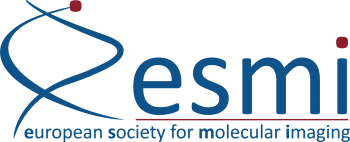Congratulations!
The PhD Award for excellent PhD thesis 2013/1 goes to Laila Ritsma from Utrecht for her thesis on “High resolution in vivo imaging of metastasis; Seeing is believing”.
Abstract
Metastatic growth is the dominant cause of cancer-related deaths, and therapeutic targeting of metastases remains challenging. Metastasis refers to a multistep process in which cancer cells migrate away from the primary tumor, disseminate throughout the body and colonize a distant tissue. Throughout this process various cells from the tumor microenvironment exhibit pro- and anti-metastatic functions, which vary with tumor type and tissue. Many details about how the different steps of metastasis are regulated are still missing, and it is unclear whether all steps are known, mostly because it has been difficult to study this dynamic process in a living animal. Here, we have investigated metastasis by visualizing tumor cells at high resolution in living mice using intravital microscopy (IVM), which is a powerful technique to study dynamic processes in vivo. We have developed two IVM tools that enabled us to study the entire metastatic cascade at subcellular resolution over weeks. The first IVM tool, called Cryosection Labeling and Intravital Microscopy (CLIM), enabled us to re-identify intravitally imaged regions in cryosections which can be stained with an unlimited number of antibodies. By correlating invasive lobular carcinoma tumor cell migration within the primary tumor to the number of stained CD3+ T cells using CLIM, we were able to show that T cells stimulate migration of these specific tumor cells. The second IVM tool allowed us to study the colonization step of the metastatic cascade in more detail over weeks. IVM usually requires surgical exposure of organs, limiting the study of metastatic growth-prone organs such as the liver to approximately 40 hours. Because metastatic colonization takes place over multiple days we developed an Abdominal Imaging Window (AIW) that allowed us to intravitally image abdominal organs over weeks. Using the AIW we discovered a new stage during metastatic colonization, which we refer to as a pre-micrometastasis stage. Suprisingly, during this stage the tumor cells are highly migratory and proliferative. This migration is necessary for these tumor cells to form macrometastases, because inhibition of migration during this pre-micrometastasis stage reduced metastatic outgrowth. As such, it may be used as a new target for pharmacological inhibition of metastatic growth. Taken together, this shows the use of IVM as an important tool to study complex dynamic processes in vivo, including the biology of metastasis.
Impact of my thesis by Laila Ritsma
My thesis describes the development of two important new tools that stongly broaden the utility of intravital microscopy. First, CLIM enables correlation between in vivo behaviour and cryosection immunolabeling, thus creating a bridge between the intravital imaging field and the histology field. IVM captures dynamic events, and now by combining IVM with cryosection immunolabeling it is possible to identify cells in the microenvironment that may influence these dynamic events. Second, the AIW is the first window that allows subcellular imaging of various abdominal organs inside a living animal over time, even up to weeks. We developed the AIW because current imaging windows are limited to imaging the breast, skin, brain and spinal cord. As a consequence, it was impossible to intravitally study abdominal organs over prolonged periods of time. The AIW is widely applicable in many research fields, as was illustrated by visualising stem cell division in the small intestine, lymphocyte migration in the spleen and transplanted islets underneath the kidney capsule. Thus, it is very likely that many research areas will strongly benefit from the development of these new IVM tools. A protocol and research article about the AIW were recently published in Nature Protocols and Science Translational Medicine. Furthermore, we would like to emphasize that several well recognized labs have shown great interest in the AIW technology, as illustrated by collaborations with Hans Clevers (imaging intestinal stem cells), Peter Friedl (imaging metastasis), John Condeelis (imaging of cancer), whom have sent researchers to learn and apply the AIW technology (all unpublished).
Besides providing opportunities for other research areas to use IVM, the development of the AIW facilitated the investigation of metastatic liver colonization inside a living animal over a long period of time. We have been the first lab to follow the outgrowth of a single tumor cell into a metastasis over days at single cell resolution. This allowed us to identify a new step during metastatic colonization; the “pre-micrometastasis” stage. During this stage the tumor cells are highly migratory and this is required for metastatic outgrowth. If the existence of the pre-micrometastasis stage can be confirmed in other cancer models, this finding may provide us with a potential treatment opportunity. It also indicates that even after cells have metastasized there is still a time-frame in which inhibition of migration can be useful to reduce metastasis. To summarize, using the AIW we have identified a new stage in cancer metastasis. Future research should determine if the pre-micromentastasis stage is common among other types of cancer, and if so, if it is possible to decrease metastasis in humans using drug treatment.
Laila Ritsma on her future career plans
“Starting August 2013, I will continue my scientific career as a postdoctoral fellow in the lab of Sridhar Ramaswamy at the Massachusetts General Hospital, Harvard Medical School, Boston, MA, USA. I will focus on cancer dormancy, a cancer cell state in which cells are alive but not actively dividing. Cells that reside in a dormant state selectively withstand chemotherapy and are therefore a major clinical problem. At present, it is largely unknown how tumor cells initiate dormancy and which molecular mechanisms induce and maintain this state. Using a new cancer cell model for dormancy, developed in the lab of Sridhar Ramaswamy, I will attempt to shed light on these questions. To do so, I will combine several cell biological and imaging techniques which I already have experience with, including intravital microscopy and life cell imaging. Finally, I will learn new techniques, including RNA sequencing. The Ramaswamy lab has extensive experience with RNA sequencing, thus providing an excellent environment for me to further develop my scientific capabilities.”

“I have no doubts that Laila will have a bright future in science ahead of her, and I expect that she will become a future leader in the field. Impressed by her skills, her intelligence and working spirit, I rank her to the best 5% of PhD students in the Netherlands. The ESMI PhD Award will help Laila to get exposure in the imaging field and will help her to initiate collaborations with other researchers which is important for her future career. Moreover, she can contribute to the success of the annual ESMI meeting by presenting her exciting new data.”
Jacco van Rheenen, Hubrecht Institute Utrecht
“PhD award winner Laila Ritsma advanced in her thesis research our fundamental understanding of cancer metastasis, through elegant development on new tools for molecular imaging. To achieve that, she developed a novel window for longitudinal intravital imaging of internal abdominal organs, thus overcoming the limitations of existing preparations. Using this window, Dr Ritsma could detect metastatic liver colonization initiated from a single cell. These studies revealed a new pre-micrometastatic stage in which the tumor cells show enhanced migratory behavior. She further developed tools for spatially correlating the in vivo imaging with cryosection immunolabeling, allowing her to identify cells in the microenvironment that may influence the dynamics of metastasis.”
Michal Neeman, chair of the Award Committee
“Dr. Ritsma has published her work in leading journals of the field, which gives her an excellent basis for her future scientific career. We are highly looking forward to follow her scientific achievements in the future and to welcome her at our next ESMI meetings.”
Fabian Kiessling member of the Award Committee
